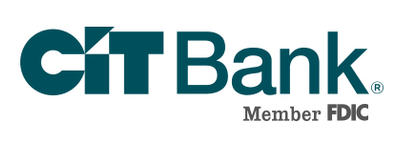What Is a CD Ladder? Pros, Cons, Alternatives

Our evaluations and opinions are not influenced by our advertising relationships, but we may earn a commission from our partners’ links. This content is created by TIME Stamped, under TIME’s direction and produced in accordance with TIME’s editorial guidelines and overseen by TIME’s editorial staff. Learn more about it.
A CD ladder is a savings strategy by which you purchase several certificates of deposit (CDs) with staggered maturities (i.e., one-year, two-year, three-year, etc.) to take advantage of higher rates on those with longer terms while preserving access to your funds on a scheduled basis.
As each CD matures, you use the funds to purchase a long-term CD. Eventually, you end up with all long-term CDs maturing at staggered intervals, providing ongoing liquidity and maximum returns.
4.00%
1 Year
3.35%
2 Years
Up to 4.10%
A CD ladder divides your investment into multiple CDs (rungs) with different maturity dates, allowing you to earn interest while still having access to some of your funds regularly. After your initial purchase, as each CD matures you replace it with a long-term (i.e., five-year), higher-interest CD. Eventually, these long-term rungs on your CD ladder mature regularly, providing liquidity and maximum return.
Most people put equal amounts into each CD to ensure access to the same funds as each CD matures. You can renew each maturing CD, lower or raise the amount, and change the term length to take advantage of varying rates, or withdraw the money for immediate needs.
Building a CD ladder is a great way to earn a higher interest rate on your savings while keeping your money safe and accessible.
Here are the steps to building a CD ladder:
| Amount | Maturity | Interest Rate* | Bank |
|---|---|---|---|
$1,000 | 6 months | 5.05%* | |
$1,000 | 12 months | 5.30%* | |
$1,000 | 18 months | 4.60%* | |
$1,000 | 24 months | 4.50%* | |
$2,500 | 30 months | 3.50%* | Discover® Bank Member FDIC |
* Based on rates offered as of Sept. 25, 2024
| First Round of CDs June 15, 2023 | Matures | Second Round of CDs | Matures |
|---|---|---|---|
6-month CD | Dec. 15, 2023 | 30-month CD | June 15, 2026 |
12-month CD | June 15, 2024 | 30-month CD | Dec. 15, 2026 |
18-month CD | Dec. 15, 2024 | 30-month CD | June 15, 2027 |
24-month CD | June 15, 2025 | 30-month CD | Dec. 15, 2027 |
30-month CD | Dec. 15, 2025 | 30-month CD | June 15, 2028 |
Building and maintaining a CD ladder has several advantages as a savings strategy.
CD ladders do come with potential drawbacks.
Begin by researching CD rates and terms offered by banks and credit unions. Rates determine how fast your money will grow. Term to maturity is essential because the more offerings there are, the more flexibility you will have in setting up your ladder.
Don’t confine yourself to a single bank or credit union. You can help spread risk around by getting CDs from different financial institutions. Once you’ve determined which CDs to buy, it’s simply a matter of creating the rungs of your ladder by purchasing them according to your preferred staggered maturity schedule.
Interest rates and terms to maturity are only two of the things you should research when deciding on which banks or credit unions should get your CD business. Make sure minimum deposit requirements fit your plan. Also, take care to understand how early withdrawal penalties work, even if you are sure you will never have to withdraw funds before maturity. And never say never.
Read the fine print regarding fees and the calculation of interest. Understand that some CDs automatically renew and make sure you are ready to act when the maturity date arrives. Although your rate is guaranteed through the maturity date of a given CD, the rate is not guaranteed to be the same for its renewal. A CD ladder is not a “set it and forget it” savings tool. It requires vigilance.
One risk with a CD ladder is the chance you might miss out on a higher interest rate in the middle of a term. You could also miss out on other investments because your money is tied up in CDs.
The risk of having a financial emergency in the middle of a term—even one that’s only six months long—could result in losses due to early withdrawal penalties. It’s always a good idea to consult a trusted financial adviser like WiserAdvisor before investing in a CD ladder, even though it is considered a low-risk strategy.
Find the right financial advisor with WiserAdvisor
Find the right financial advisor with WiserAdvisor
Traditional CD ladders, as described above, are not the only ways to employ a ladder structure with savings.
Barbell CD ladder. This type of structure involves investing in a balance of short-term and long-term CDs to provide access to half of your investment and better growth to the other half.
Bullet CD ladder. In this structure you would invest in a series of CDs, bought over time, that all mature on the same date. This is good if you are saving for a specific goal, such as buying a house. As many banks automatically renew CDs, you must be vigilant when using this strategy.
Bump-up CD ladder. This type of CD ladder allows you to take advantage of increasing interest rates over time. Bump-up CDs typically provide for an interest rate increase once during the CD term, though only if the bank raises rates for new CDs.
CD ladder alternatives, especially if you don’t mind taking on a little more risk, include things such as a mix of short-term and long-term bonds. This could result in higher returns but more risk. You could invest in a diversified portfolio of stocks or mutual funds, provided you have the knowledge and skill and are willing to do the research.
A textbook CD ladder would consist of equal value, evenly spaced CDs with increasing interest rates as the date to maturity gets longer. When there is uncertainty in the marketplace and economy, this type of ladder is more difficult to assemble.
A CD ladder contains multiple CDs with ever-increasing maturity dates based on your liquidity tolerance. If you need frequent access to investment funds, six-month spacing is best. If your needs allow it, one year between maturity dates is a good choice.
A three-rung CD ladder is the minimum you should aim for. Most people use five CDs—the optimum number—with either six-month or one-year spacings.
A CD ladder is a reasonably safe way to grow savings with higher interest rates than are offered by regular savings accounts. The downside is that higher rates usually require losing access to investment funds. By building a CD ladder, you gain more-frequent liquidity while enjoying better returns than some other savings strategies provide.
One of the beauties of a CD ladder is that it's highly customizable. You can choose the number of rungs (CDs), maturity dates, and amount invested in each CD.
Typically, longer-term CDs come with higher interest rates, but, of course, they tie up funds longer. In times of market and economic uncertainty, shorter-term CDs may also have higher rates.
At maturity you can reinvest the funds into a new CD—with, if possible, a higher interest rate. Typically, this means the new CD will have a longer maturity date. You can also withdraw and use the funds, although that means this rung of your CD ladder goes away until and unless you replace it.
You can withdraw funds before maturity, but it is not recommended, because it usually results in a penalty that causes you to lose some of the interest you have earned. In some cases early withdrawal can even result in the loss of some principal.
CDs are after-tax savings vehicles, meaning their earnings are taxable, but their principal is not. There are IRA CDs that offer tax advantages, and they can be constructed as a CD ladder.
Yes, but this can impact the overall ladder structure and should be carefully considered, including consulting with a trusted financial adviser.
As CDs offer a fixed interest rate, the returns of a CD ladder are guaranteed, assuming you do not make early withdrawals or otherwise interfere with the maturity dates of the individual CDs in the ladder.
A mini CD ladder is made up exclusively of shorter-term CDs. It could include three-month, six-month, or nine-month CDs. Interest rates on short-term CDs are usually low. That makes, this earning strategy less effective than the classic CD ladder, as it combines low rates with a short time to maturity.
The information presented here is created by TIME Stamped and overseen by TIME editorial staff. To learn more, see our About Us page.







